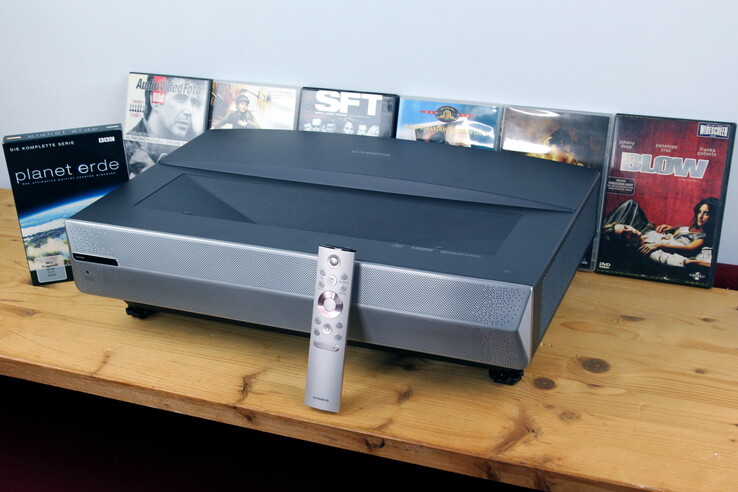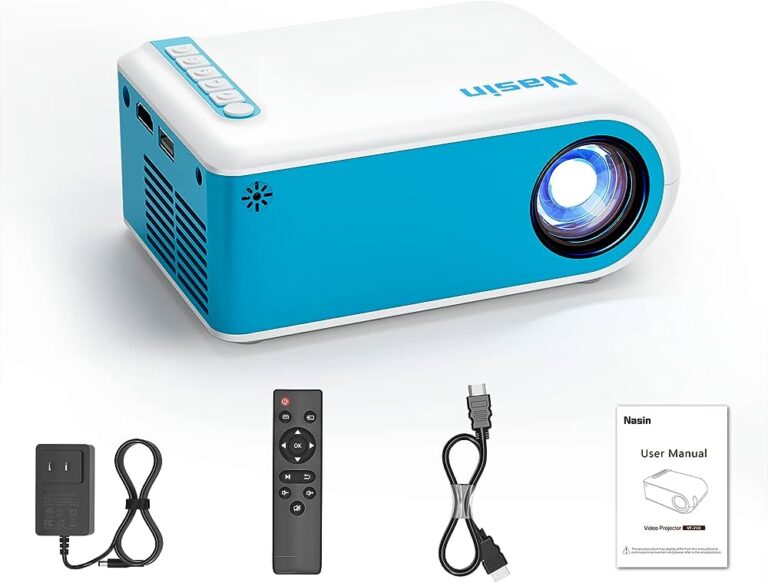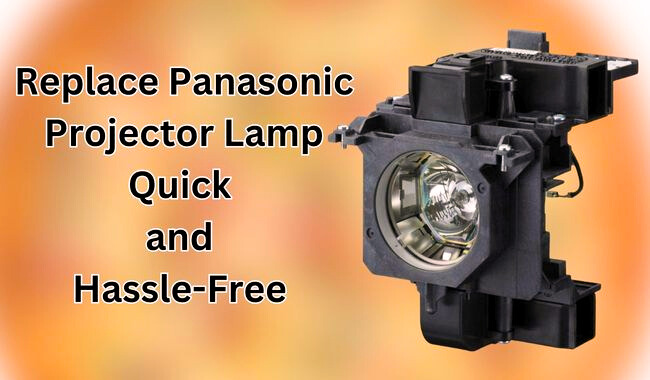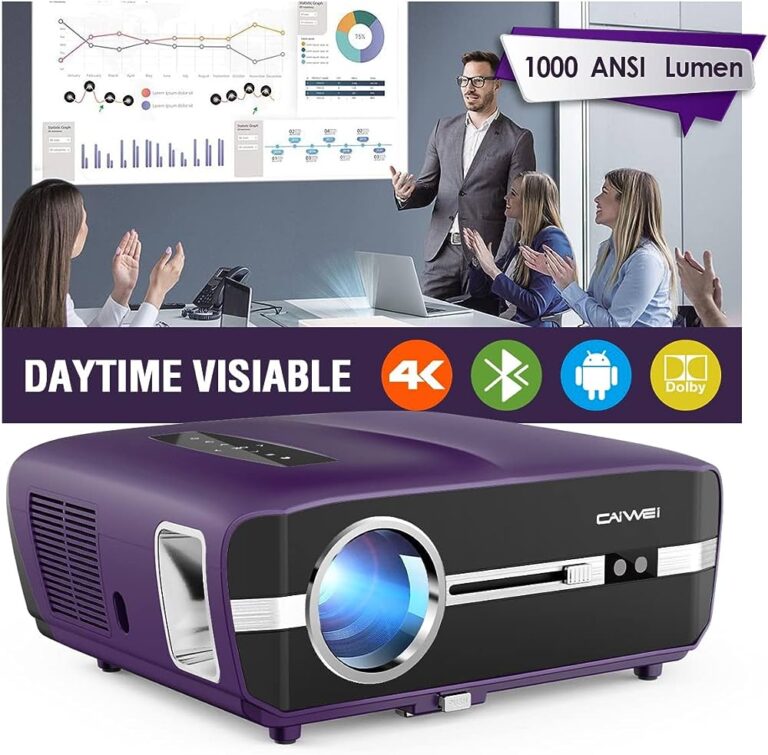How Many Watts Does a Projector Use: Unveiling the True Power Consumption

A projector typically uses around 200 to 400 watts of power. Projectors are devices that display images or videos on a projection screen or other flat surfaces.
These devices require an electrical power source to function, and the wattage indicates the amount of power consumed. The power usage can vary depending on the model, brightness, and other features of the projector. It is important to consider the power consumption when using a projector to ensure it is compatible with the available power supply and to manage energy usage efficiently.

Credit: www.notebookcheck.net
TABLE OF CONTENTS
Understanding Projector Power Consumption
Projector power consumption varies, but most projectors use between 100 to 400 watts of electricity. It’s important to consider wattage when choosing a projector, as higher wattage often indicates brighter image quality. Be mindful of energy efficiency to minimize power consumption.
Projector power consumption is an important consideration when purchasing a projector for your home or office. Understanding how many watts a projector uses can help you determine its efficiency and potential impact on your electricity bill. In this section, we will delve into the details of projector power consumption to provide you with a better understanding.
Factors Affecting Projector Power Consumption:
- Brightness: A projector’s brightness is measured in ANSI lumens. Generally, higher brightness requires more power.
- Lamp Type: Different types of lamps have varying power requirements. For example, LED lamps usually consume less power compared to traditional lamps.
- Display Resolution: Higher resolution projectors tend to consume more power than lower resolution models.
- Usage Time: The total hours of usage can significantly impact the power consumption of a projector.
Energy-Efficient Projectors:
- Eco Mode: Most projectors offer an Eco mode, which reduces brightness and power consumption while extending lamp life.
- Power Saving Features: Some projectors come with power-saving features like automatic shut-off when no input signal is detected.
- Energy Star Certification: Opt for projectors with Energy Star certification, as they meet strict energy efficiency guidelines.
Tips To Minimize Power Consumption:
- Adjust Brightness: If the projector is too bright for your needs, reducing brightness can save power.
- Turn Off When Not in Use: Make sure to turn off the projector when not in use to conserve energy.
- Optimize Placement: Properly position the projector to ensure efficient airflow and prevent overheating, which can increase power consumption.
Overall, understanding projector power consumption is crucial for making an informed decision when purchasing a projector. Consider factors like brightness, lamp type, and energy-saving features to choose an efficient and cost-effective option for your needs. With these insights, you can minimize power consumption while enjoying outstanding image quality for your presentations, movie nights, or gaming sessions.
Factors Influencing Power Usage
Factors influencing the power usage of projectors are their brightness level, display technology, and usage time. The wattage of a projector typically ranges from 100 to 400 watts, with larger models consuming more power.
Projectors have become an essential tool for presentations, movie nights, and gaming sessions. If you’re wondering about the power consumption of projectors, there are several factors that come into play. Understanding these factors will help you determine how many watts a projector uses and make an informed decision.
Here are the key factors that influence power usage:
- Projection Technology:
- LCD (Liquid Crystal Display): LCD projectors are known for their energy-efficient performance.
- DLP (Digital Light Processing): DLP projectors generally consume more power compared to LCD projectors.
- Brightness Level:
- Higher brightness levels require more power. Projectors with high lumens ratings tend to consume more watts.
- Consider your specific needs and usage scenarios when selecting a projector based on brightness.
- Resolution:
- Higher-resolution projectors demand more power compared to lower-resolution models.
- Opt for a resolution that fulfills your requirements without excessive power consumption.
- Lamp Type:
- Traditional lamps: Projectors equipped with traditional lamps use more power. These lamps need to warm up before reaching optimal brightness.
- LED lamps: LED lamps are energy-efficient and have a longer lifespan but might be less bright compared to traditional lamps.
- Laser lamps: Laser projectors provide excellent brightness while consuming relatively less power.
- Operating Mode:
- Eco mode: Projectors usually offer an eco or energy-saving mode that reduces power consumption at the expense of reduced brightness.
- Normal mode: The normal mode drives the projector to its full potential, resulting in higher power usage.
- Dark content: Projecting darker scenes or content with more black pixels can reduce power consumption.
- Bright content: Bright and vibrant content like presentations or video games often requires higher power consumption.
- Ambient Lighting:
- Projecting in dimly lit environments allows you to use projectors at a lower brightness setting, saving power.
- Bright ambient lighting may necessitate higher brightness settings, thus increasing power usage.
- Connectivity and Features:
- Built-in speakers, HDMI ports, wireless connectivity, and advanced features can contribute to increased power consumption.
- Ensure you consider the power requirements of these additional features when choosing a projector.
Understanding these factors will help you estimate the power usage of a projector. By carefully considering your needs and preferences, you can select a projector that balances energy efficiency with performance, ensuring an optimal viewing experience while minimizing power consumption.
Typical Power Consumption Ratings
Projectors typically consume varying amounts of power, with average wattage ranging between 200 to 800 watts, depending on the model and brightness settings. This makes it important for users to consider power consumption ratings when selecting a projector for their needs.
Projectors have become a popular choice for both professional presentations and home entertainment setups. When considering purchasing a projector, it’s important to know how many watts it uses in order to determine its power consumption and potential impact on energy costs.
We will explore the typical power consumption ratings of projectors, shedding light on their energy usage and efficiency.
Projector power consumption ratings can vary depending on the model and usage scenario. Here are some key points to consider:
- Normal Mode: Projectors typically have a “normal” or “standard” mode for everyday use. In this mode, power consumption can range from 200 to 400 watts. This level of energy usage provides a balanced combination of brightness and energy efficiency.
- Eco Mode: Many projectors feature an eco or energy-saving mode, which is designed to reduce power consumption. In eco mode, the projector’s wattage can drop to around 150 to 250 watts. While the brightness may be slightly reduced, this energy-saving setting can significantly extend the projector’s lamp life.
- Standby Mode: When a projector is not actively in use, it may enter a standby or sleep mode to conserve power. Standby power consumption typically ranges from 1 to 10 watts, depending on the model. It’s worth noting that some projectors automatically enter standby mode after a period of inactivity to further reduce energy waste.
- Brightness Impact: It’s important to understand that higher brightness levels often require more power. Therefore, if you plan on using your projector in well-lit environments or for large presentations, a higher wattage projector may be necessary to ensure optimal visibility and image quality.
- Energy Efficiency Considerations: Energy efficiency has become a priority in recent years. When purchasing a projector, you may come across terms like “Energy Star certified” or “eco-friendly.” These designations indicate that the projector meets specific energy efficiency standards set by organizations like the U.S. Environmental Protection Agency.
The power consumption of projectors can vary depending on the mode of operation and brightness settings. By considering factors like normal mode, eco mode, standby mode, brightness impact, and energy efficiency, you can choose a projector that aligns with your needs while also minimizing your energy costs.
Calculating Projector Energy Costs
Projector energy costs can be calculated by determining the wattage usage of the device. Knowing how many watts a projector uses is essential in estimating and managing energy consumption for effective cost control.
Here’s how you can calculate the energy costs of your projector. It’s important to understand the power consumption of your projector so you can estimate how much it will cost you in electricity bills. Let’s break down the process:
1. Check the projector’s Power Consumption:
- Consult the user manual or the specifications sheet of your projector to find the power consumption information.
- Look for the wattage rating of the projector, which indicates the amount of power it consumes during operation.
2. Determine The Daily Usage:
- Calculate the number of hours you use the projector on a daily basis.
- Multiply the daily usage by 30 to get the monthly usage.
3. Calculate Energy Consumption:
- Multiply the wattage rating of the projector by the number of hours it’s used daily.
- This will give you the projector’s daily energy consumption in watt-hours (Wh).
- To convert it into kilowatt-hours (kWh), divide the result by 1000.
4. Estimating Monthly Energy Costs:
- Check your electricity provider’s rate per kWh.
- Multiply this rate by the monthly energy consumption of the projector to determine your projected energy cost for using the projector.
5. Additional Tips To Save Energy:
- Use power-saving features if your projector has them, such as an eco-mode that reduces brightness and energy consumption.
- Optimize the projector’s settings to minimize power usage without compromising image quality.
- Consider using a power strip with an on/off switch to easily turn off the projector and prevent it from drawing standby power.
By following these steps, you can calculate the energy costs associated with using your projector. This knowledge will help you budget for your electricity expenses and make informed decisions about energy-efficient usage. Happy projecting!
Energy-Saving Tips For Projector Use
Looking to save energy while using a projector? Find out how many watts a projector uses and discover energy-saving tips to reduce your energy consumption.
Projectors are a great tool for presentations, movie nights, or gaming sessions. However, they can consume a significant amount of energy, which can lead to higher electricity bills. To help you save energy and reduce costs, here are some valuable tips for projector use:
- Adjust brightness settings: Lowering the projector’s brightness can significantly reduce energy consumption without compromising the quality of the image. Experiment with the settings to find the optimal balance between brightness and energy efficiency.
- Utilize eco-mode: Most projectors come equipped with an eco-mode feature that reduces power consumption. This mode lowers brightness, extends lamp life, and decreases fan speed. Make sure to enable eco-mode when possible to save energy.
- Optimize screen size: Adjusting the screen size to fit your needs can have a noticeable impact on energy consumption. Shrinking the screen size will decrease the amount of light the projector needs to produce, resulting in lower energy requirements.
- Consider ambient light conditions: Pay attention to the ambient light conditions in the room where the projector is being used. The darker the room, the less brightness needed from the projector, leading to energy savings. Close curtains or blinds, turn off unnecessary lights, and create a suitable environment for projector use.
- Use energy-efficient projector lamps: When replacing projector lamps, look for energy-efficient options that consume less power. These lamps can provide the same level of brightness while using fewer watts, resulting in energy savings.
- Turn off when not in use: It may seem obvious, but turning off the projector when it’s not in use is a simple yet effective energy-saving measure. Avoid leaving the projector on standby mode as it still consumes a significant amount of power.
- Clean projector filters: Regularly cleaning the projector’s filters helps maintain optimal airflow, preventing overheating. A clean projector runs more efficiently, reducing energy consumption.
- Properly ventilate the room: Provide adequate ventilation in the room where the projector is used to prevent it from overheating. Good airflow around the projector allows it to operate optimally and avoids unnecessary energy usage.
- Use power-saving features: Take advantage of any power-saving features available on your projector. Some models have automatic shut-off timers that can be set to turn off the projector after a specific period of inactivity.
- Consider alternative display options: In certain situations, using a projector may not be the most energy-efficient choice. For example, if you only need to display content for a small group, a smaller display like a monitor or TV may consume less energy.
Implementing these energy-saving tips for projector use will not only help you save on electricity bills but also contribute to a more sustainable environment. So go ahead and enjoy your projector, knowing that you’re being energy-conscious at the same time.
Frequently Asked Questions Of How Many Watts Does A Projector Use
How Many Watts Does An Epson Projector Use?
The Epson projector typically uses around (X) watts of power.
Does A Projector Use More Power Than A TV?
Yes, a projector typically uses more power than a TV due to its larger size and brighter display.
How Much Power Does An Led Projector Use?
An LED projector typically uses a minimal amount of power due to its energy-efficient technology.
Do Projectors Cost A Lot To Run?
Projectors do not cost a lot to run, making them an affordable option.
Conclusion
To summarize, understanding the wattage usage of a projector is crucial for not only optimizing its performance but also managing its energy consumption. By considering factors such as the projector type, brightness level, and usage patterns, you can choose the right projector with the appropriate wattage.
Understanding the wattage requirements of a projector can also help you calculate the electricity costs and ensure that you are efficient and cost-effective. Furthermore, selecting energy-efficient projectors with features like eco-mode can help reduce energy consumption without compromising on image quality.
So, whether you are setting up a home theater or a professional presentation room, make sure to research and choose a projector with the right wattage for optimal performance and energy efficiency. With the right knowledge and selection, you can enjoy stunning visuals while minimizing your environmental impact and saving on electricity costs.





